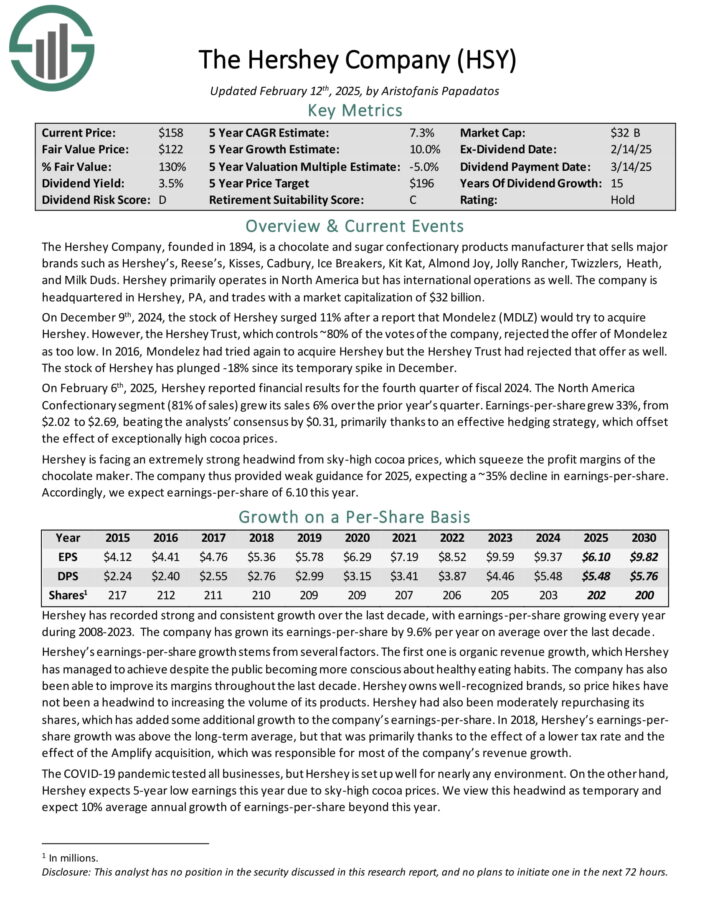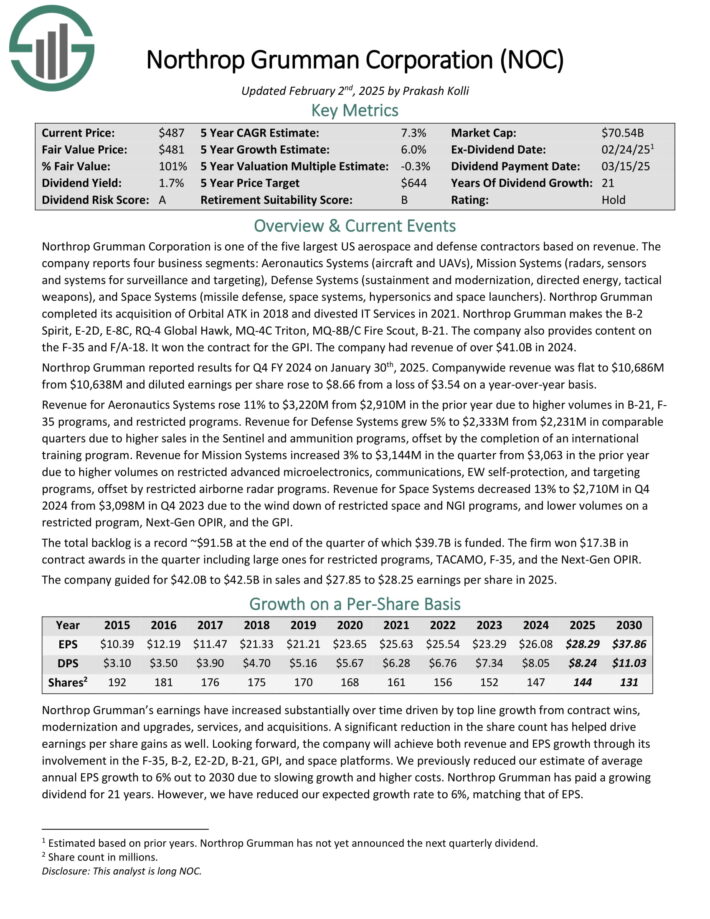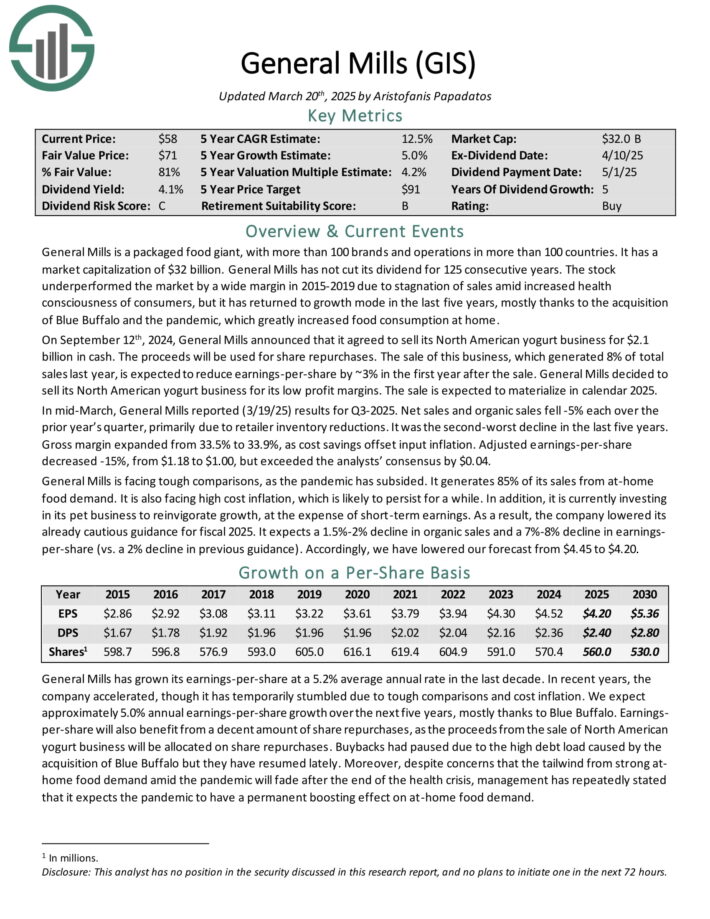Updated on March 27th, 2025 by Bob Ciura
In the world of investing, volatility matters. Investors are reminded of this every time there is a downturn in the broader market and individual stocks that are more volatile than others experience enormous swings in price.
Volatility is a proxy for risk; more volatility generally means a riskier portfolio. The volatility of a security or portfolio against a benchmark is called Beta.
In short, Beta is measured via a formula that calculates the price risk of a security or portfolio against a benchmark, which is typically the broader market as measured by the S&P 500.
Here’s how to read stock betas:
- A beta of 1.0 means the stock moves equally with the S&P 500
- A beta of 2.0 means the stock moves twice as much as the S&P 500
- A beta of 0.0 means the stocks moves don’t correlate with the S&P 500
- A beta of -1.0 means the stock moves precisely opposite the S&P 500
Interestingly, low beta stocks have historically outperformed the market… But more on that later.
You can download a spreadsheet of the 100 lowest beta S&P stocks (along with important financial metrics like price-to-earnings ratios and dividend yields) below:
This article will discuss beta more thoroughly, why low-beta stocks tend to outperform, and provide a discussion of the 5 lowest-beta dividend stocks in the Sure Analysis Research Database.
The table of contents below allows for easy navigation.
Table of Contents
- The Evidence for Low Beta Outperformance
- How To Calculate Beta
- Beta & The Capital Asset Pricing Model (CAPM)
- Analysis On The Top 5 Low Beta Stocks
- Final Thoughts
The Evidence for Low Beta Stocks Outperformance
Beta is helpful in understanding the overall price risk level for investors during market downturns in particular. The lower the Beta value, the less volatility the stock or portfolio should exhibit against the benchmark. This is beneficial for investors for obvious reasons, particularly those that are close to or already in retirement, as drawdowns should be relatively limited against the benchmark.
Importantly, low or high Beta simply measures the size of the moves a security makes; it does not mean necessarily that the price of the security stays nearly constant. Indeed, securities can be low Beta and still be caught in long-term downtrends, so this is simply one more tool investors can use when building a portfolio.
The conventional wisdom would suggest that lower Beta stocks should underperform the broader markets during uptrends and outperform during downtrends, offering investors lower prospective returns in exchange for lower risk.
However, history would suggest that simply isn’t the case. Indeed, this paper from Harvard Business School suggests that not only do low Beta stocks not underperform the broader market over time – including all market conditions – they actually outperform.
A long-term study wherein the stocks with the lowest 30% of Beta scores in the US were pitted against stocks with the highest 30% of Beta scores suggested that low Beta stocks outperform by several percentage points annually.
Over time, this sort of outperformance can mean the difference between a comfortable retirement and having to continue working. While low Beta stocks aren’t a panacea, the case for their outperformance over time – and with lower risk – is quite compelling.
How To Calculate Beta
The formula to calculate a security’s Beta is fairly straightforward. The result, expressed as a number, shows the security’s tendency to move with the benchmark.
For example, a Beta value of 1.0 means that the security in question should move in lockstep with the benchmark. A Beta of 2.0 means that moves in the security should be twice as large in magnitude as the benchmark and in the same direction, while a negative Beta means that movements in the security and benchmark tend to move in opposite directions or are negatively correlated.
Related: The S&P 500 Stocks With Negative Beta.
In other words, negatively correlated securities would be expected to rise when the overall market falls, or vice versa. A small value of Beta (something less than 1.0) indicates a stock that moves in the same direction as the benchmark, but with smaller relative changes.
Here’s a look at the formula:
The numerator is the covariance of the asset in question with the market, while the denominator is the variance of the market. These complicated-sounding variables aren’t actually that difficult to compute – especially in Excel.
Additionally, Beta can also be calculated as the correlation coefficient of the security in question and the market, multiplied by the security’s standard deviation divided by the market’s standard deviation.
Finally, there’s a greatly simplified way to calculate Beta by manipulating the capital asset pricing model formula (more on Beta and the capital asset pricing model later in this article).
Here’s an example of the data you’ll need to calculate Beta:
- Risk-free rate (typically Treasuries at least two years out)
- Your asset’s rate of return over some period (typically one year to five years)
- Your benchmark’s rate of return over the same period as the asset
To show how to use these variables to do the calculation of Beta, we’ll assume a risk-free rate of 2%, our stock’s rate of return of 7% and the benchmark’s rate of return of 8%.
You start by subtracting the risk-free rate of return from both the security in question and the benchmark. In this case, our asset’s rate of return net of the risk-free rate would be 5% (7% – 2%). The same calculation for the benchmark would yield 6% (8% – 2%).
These two numbers – 5% and 6%, respectively – are the numerator and denominator for the Beta formula. Five divided by six yields a value of 0.83, and that is the Beta for this hypothetical security. On average, we’d expect an asset with this Beta value to be 83% as volatile as the benchmark.
Thinking about it another way, this asset should be about 17% less volatile than the benchmark while still having its expected returns correlated in the same direction.
Beta & The Capital Asset Pricing Model (CAPM)
The Capital Asset Pricing Model, or CAPM, is a common investing formula that utilizes the Beta calculation to account for the time value of money as well as the risk-adjusted returns expected for a particular asset.
Beta is an essential component of the CAPM because without it, riskier securities would appear more favorable to prospective investors. Their risk wouldn’t be accounted for in the calculation.
The CAPM formula is as follows:
The variables are defined as:
- ERi = Expected return of investment
- Rf = Risk-free rate
- βi = Beta of the investment
- ERm = Expected return of market
The risk-free rate is the same as in the Beta formula, while the Beta that you’ve already calculated is simply placed into the CAPM formula. The expected return of the market (or benchmark) is placed into the parentheses with the market risk premium, which is also from the Beta formula. This is the expected benchmark’s return minus the risk-free rate.
To continue our example, here is how the CAPM actually works:
ER = 2% + 0.83(8% – 2%)
In this case, our security has an expected return of 6.98% against an expected benchmark return of 8%. That may be okay depending upon the investor’s goals as the security in question should experience less volatility than the market thanks to its Beta of less than 1. While the CAPM certainly isn’t perfect, it is relatively easy to calculate and gives investors a means of comparison between two investment alternatives.
Now, we’ll take a look at five stocks that not only offer investors low Beta scores, but attractive prospective returns as well.
Analysis On The Top 5 Low Beta Stocks
The following 5 low beta stocks have the lowest (but positive) Beta values, in ascending order from lowest to highest. They also pay dividends to shareholders. We focused on Betas above 0, as we are still looking for stocks that are positively correlated with the broader market:
5. Consolidated Edison (ED)
Consolidated Edison is a large-cap utility stock. The company generates nearly $15 billion in annual revenue and has a market capitalization of approximately $36 billion.
The company serves 3.7 million electric customers, and another 1.1 million gas customers, in New York.
Source: Investor Presentation
It operates electric, gas, and steam transmission businesses, with a steam system that is the largest in the U.S.
On February 20th, 2025, Consolidated Edison announced fourth quarter and full year results for the period ending December 31st, 2024. For the quarter, revenue grew 6.5% to $3.7 billion, which beat estimates by $36 million.
Adjusted earnings of $340 million, or $0.98 per share, compared to adjusted earnings of $346 million, or $1.00 per share, in the previous year. Adjusted earnings-per-share were $0.02 ahead of expectations.
For the year, revenue increased 4.0% to $15.3 billion while adjusted earnings of $1.87 billion, or $5.40 per share, compared to adjusted earnings of $1.76 billion, or $5.07 per share, in 2023.
Average rate base balances are now projected to grow by 8.2% annually through 2029 based off 2025 levels. This is up from the company’s prior forecast of 6.4%.
Click here to download our most recent Sure Analysis report on Consolidated Edison (preview of page 1 of 3 shown below):
4. The Hershey Company (HSY)
The Hershey Company, founded in 1894, is a chocolate and sugar confectionary products manufacturer that sells major brands such as Hershey’s, Reese’s, Kisses, Cadbury, Ice Breakers, Kit Kat, Almond Joy, Jolly Rancher, Twizzlers, Heath, and Milk Duds. Hershey primarily operates in North America but has international operations as well.
On February 6th, 2025, Hershey reported financial results for the fourth quarter of fiscal 2024. The North America Confectionary segment (81% of sales) grew its sales 6% over the prior year’s quarter.
Earnings-per-share grew 33%, from $2.02 to $2.69, beating the analysts’ consensus by $0.31, primarily thanks to an effective hedging strategy, which offset the effect of exceptionally high cocoa prices.
Hershey’s earnings-per-share growth stems from several factors. The first one is organic revenue growth, which Hershey has managed to achieve despite the public becoming more conscious about healthy eating habits. The company has also been able to improve its margins throughout the last decade.
Hershey owns well-recognized brands, so price hikes have not been a headwind to increasing the volume of its products. Hershey had also been moderately repurchasing its shares, which has added some additional growth to the company’s earnings-per-share.
HSY has a Beta score of 0.28.
Click here to download our most recent Sure Analysis report on HSY (preview of page 1 of 3 shown below):
3. Northrop Grumman (NOC)
Northrop Grumman Corporation is one of the five largest US aerospace and defense contractors based on revenue.
The company reports four business segments: Aeronautics Systems (aircraft and UAVs), Mission Systems (radars, sensors and systems for surveillance and targeting), Defense Systems (sustainment and modernization, directed energy, tactical weapons), and Space Systems (missile defense, space systems, hypersonics and space launchers).
Northrop Grumman makes the B-2 Spirit, E-2D, E-8C, RQ-4 Global Hawk, MQ-4C Triton, MQ-8B/C Fire Scout, B-21. The company also provides content on the F-35 and F/A-18. It won the contract for the GPI. The company had revenue of over $41.0B in 2024.
Northrop Grumman reported results for Q4 FY 2024 on January 30th, 2025. Companywide revenue was flat and diluted earnings per share rose to $8.66 from a loss of $3.54 on a year-over-year basis. Revenue for Aeronautics Systems rose 11% due to higher volumes in B-21, F-35 programs, and restricted programs.
The total backlog is a record ~$91.5B at the end of the quarter of which $39.7B is funded. The firm won $17.3B in contract awards in the quarter including large ones for restricted programs, TACAMO, F-35, and the Next-Gen OPIR. The company guided for $42.0B to $42.5B in sales and $27.85 to $28.25 earnings per share in 2025.
NOC has a Beta score of 0.21.
Click here to download our most recent Sure Analysis report on NOC (preview of page 1 of 3 shown below):
2. Campbell Soup (CPB)
Campbell Soup Company is a multinational food company headquartered in Camden, N.J. The company manufactures and markets branded convenience food products, such as soups, simple meals, beverages, snacks, and packaged fresh foods.
The company’s portfolio focuses on two specific businesses: Campbell Snacks, and Campbell Meals and Beverages. Campbell generated annual sales of $9.6 billion in fiscal 2024.
On March 12, 2024, Campbell closed on its acquisition of Sovos Brands (SOVO) for $23 per share in cash, which represented a total enterprise value of $2.7 billion, and was funded by issuing new debt. Sovos is a leader in high growth premium Italian sauces, and owns the market-leading Rao’s brand.
Campbell Soup reported second quarter FY 2025 results on March 5th, 2025. Net sales for the quarter improved by 9% year-over-year to $2.7 billion. This increase was mostly a result of the Sovos Brands acquisition. Adjusted EPS was 8% lower year-over-year at $0.74 for the quarter, which beat expectations by two cents.
The company repurchased $56 million worth of shares in H1. There remains $301 million remaining under the current $500 million share repurchase program, which is in addition to the existing $205 million remaining on its anti-dilutive share repurchase program.
Leadership updated its full-year fiscal 2025 guidance. Management now estimates that in fiscal 2025, Campbell’s adjusted earnings per share will be down 1% to 4%.
CPB has a Beta score of 0.19.
Click here to download our most recent Sure Analysis report on CPB (preview of page 1 of 3 shown below):
1. General Mills (GIS)
General Mills is a packaged food giant, with more than 100 brands and operations in more than 100 countries. It has returned to growth in the last five years, mostly thanks to the acquisition of Blue Buffalo and the pandemic, which greatly increased food consumption at home.
In mid-March, General Mills reported (3/19/25) results for Q3-2025. Net sales and organic sales fell -5% each over the prior year’s quarter, primarily due to retailer inventory reductions. It was the second-worst decline in the last five years.
Gross margin expanded from 33.5% to 33.9%, as cost savings offset input inflation. Adjusted earnings-per-share decreased -15%, from $1.18 to $1.00, but exceeded the analysts’ consensus by $0.04.
General Mills has grown its earnings-per-share at a 5.2% average annual rate in the last decade. We expect approximately 5.0% annual earnings-per-share growth over the next five years, mostly thanks to Blue Buffalo.
Earnings-per-share will also benefit from a decent amount of share repurchases, as the proceeds from the sale of North American yogurt business will be allocated on share repurchases.
GIS has a Beta score of 0.15.
Click here to download our most recent Sure Analysis report on GIS (preview of page 1 of 3 shown below):
Final Thoughts
Investors must take risk into account when selecting from prospective investments. After all, if two securities are otherwise similar in terms of expected returns but one offers a much lower Beta, the investor would do well to select the low Beta security as they may offer better risk-adjusted returns.
Using Beta can help investors determine which securities will produce more volatility than the broader market and which ones may help diversify a portfolio, such as the ones listed here.
The five stocks we’ve looked at not only offer low Beta scores, but they also offer attractive dividend yields. Sifting through the immense number of stocks available for purchase to investors using criteria like these can help investors find the best stocks to suit their needs.
At Sure Dividend, we often advocate for investing in companies with a high probability of increasing their dividends each and every year.
If that strategy appeals to you, it may be useful to browse through the following databases of dividend growth stocks:
- The Dividend Aristocrats List: dividend stocks with 25+ years of consecutive dividend increases
- The High Yield Dividend Aristocrats List is comprised of the 20 Dividend Aristocrats with the highest current yields.
- The Dividend Achievers List is comprised of ~350 stocks with 10+ years of consecutive dividend increases.
- The Dividend Kings List is even more exclusive than the Dividend Aristocrats. It is comprised of 55 stocks with 50+ years of consecutive dividend increases.
- The High Yield Dividend Kings List is comprised of the 20 Dividend Kings with the highest current yields.
- The Blue Chip Stocks List: stocks that qualify as Dividend Achievers, Dividend Aristocrats, and/or Dividend Kings
- The High Dividend Stocks List: stocks that appeal to investors interested in the highest yields of 5% or more.
- The Monthly Dividend Stocks List: stocks that pay dividends every month, for 12 dividend payments per year.
- The Dividend Champions List: stocks that have increased their dividends for 25+ consecutive years.
Note: Not all Dividend Champions are Dividend Aristocrats because Dividend Aristocrats have additional requirements like being in The S&P 500. - The Dividend Contenders List: 10-24 consecutive years of dividend increases.
- The Dividend Challengers List: 5-9 consecutive years of dividend increases.








